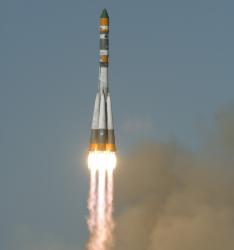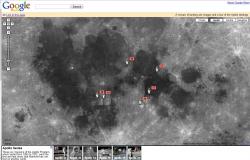
"A1S takes SAP much closer to a more purist model of software as a service than it has previously attempted, and is likely to become a very significant part of the SAP portfolio in the years ahead," Ovum researcher David Mitchell wrote in a recent note.
He said SAP, Oracle and Microsoft had previously taken a wider approach to on-demand software, mixing programs that sit on personal computers with programs residing on Web servers.
SAP is the world's top maker of business software, which helps companies manage accounting, inventory control, shipping, sales and marketing. It earns the bulk of revenue from licenses on software installed on its customers' premises.
SAP is now taking a page out of the playbooks of Salesforce and NetSuite, a company majority owned by Oracle Chief Executive Larry Ellison that filed in July to go public.
It will also be competing with software from Workday Inc, a privately held company started in March 2005 by PeopleSoft founder Dave Duffield that offers Web-based accounting and human-resources software. Oracle acquired PeopleSoft in January 2005 for $10 billion.
Fewer than 100 companies have tried the new SAP product as part of the early testing process. SAP has said it would spend about $500 million on A1S through the end of next year.
"There's a pretty good chance they can execute well here," said Forrester Research analyst Paul Hamerman.
People familiar with the matter said the software would be rolled out gradually in the United States, Germany, Britain and France. It should be widely available in those countries in the first quarter of 2008 and SAP hopes to have "thousands" of customers by early 2009, they said.
"This isn't for everyone, but I think there is a market for it," Hamerman said.
SAP has been surprised by leaps in the capabilities of Web-delivered services evidenced by the likes of Google Inc (GOOG.O: Quote, Profile, Research), analysts said.
Google provides e-mail, word processing, spreadsheets and presentation software through a growing portfolio of products that it calls Google Apps. SAP felt it had little choice but to enter the market in earnest, analysts said.
SAP, with some 42,000 customers, has traditionally sold its software to companies with at least 500 employees. It is now looking to build its base to 100,000 customers by 2010, using A1S to attract companies with between 100 and 500 employees.
In doing so it will meet a previously stated goal of boosting the size of the market for business applications that it can address to $70 billion by 2010 from $30 billion.
An initial challenge for SAP will be marketing to smaller businesses, which is generally done through independent consultants, or resellers, who advise businesses on which software to buy, then help install it.
Ron Hinchcliffe, vice president of Synergy Plus Solutions Inc, a reseller with operations in Livonia, Michigan, and Windsor, Ontario, said he was skeptical of SAP's new offering.
"It's a version one. We generally try to look at those a little more tentatively," Hinchcliffe said. "If we recommend it right out of the gate, we could be risking our reputation."
MORE NEWS....
SAP's products focus on Enterprise Resource Planning (ERP), which it helped to pioneer. The company's main product is SAP ERP. The name of its predecessor, SAP R/3 gives a clue to its functionality: the "R" stands for realtime, the number 3 relates to a 3 tier client-server architecture (database layer-application layer-presentation layer) 3-tier architecture: database, application server and client (SAPgui). R/2, which ran on a Mainframe architecture, was the first SAP version.
Other major product offerings include Advanced Planner and Optimizer (APO), Business Information Warehouse (BW), Customer Relationship Management (CRM), Supply Chain Management (SCM), Supplier Relationship Management (SRM), Human Resource Management Systems (HRMS), Product Lifecycle Management (PLM), Exchange Infrastructure (XI), Enterprise Portal (EP) and SAP Knowledge Warehouse (KW).
The APO name has been retired and rolled into SCM. The BW name (Business Warehousing) has now been rolled into the SAP NetWeaver BI (Business Intelligence) suite and functions as the reporting module.
The company also offers a new technology platform, named SAP NetWeaver which replaces SAP Business Connector for Integration/middleware capabilities [8] and offers a systematic approach to Enterprise SOA solutions with a collection of products. While its original products are typically used by Fortune 500 companies, SAP is now also actively targeting small and medium sized enterprises (SME) with its SAP Business One and SAP All-in-One.
SAP officials say there are over 100,600 SAP installations serving more than 41,200 companies in more than 25 industries in more than 120 countries.[9]
Technorati : SAP, Web-, business, delivered, software, unveil


 This is just in time for all those teams considering building a robot lunar rover to win $20 million in the Google Lunar X Prize.
This is just in time for all those teams considering building a robot lunar rover to win $20 million in the Google Lunar X Prize.